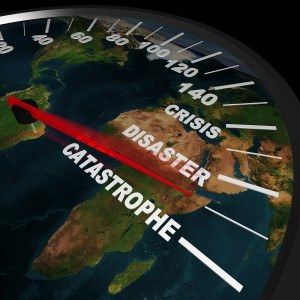

 Catastrophe modeling is going mainstream, well beyond the world of property/casualty insurance underwriting. It is becoming a necessary tool as consumers and the municipalities in which they live deal with increasingly common natural disasters and the damage they cause, a Willis Towers Watson executive said at a recent NAIC conference.
Catastrophe modeling is going mainstream, well beyond the world of property/casualty insurance underwriting. It is becoming a necessary tool as consumers and the municipalities in which they live deal with increasingly common natural disasters and the damage they cause, a Willis Towers Watson executive said at a recent NAIC conference.
“The level of interest that the insurance and reinsurance industry has [created] in understanding climate and natural disaster risk, and managing it pretty successfully … over the last 25 years…is something being picked up by communities and forces even larger than those in this room,” argued Rowan Douglas, the CEO for Willis Towers Watson’s Capital Science & Technology Practice, during a panel discussion at the NAIC International Insurance Forum on May 14 in Washington, D.C.
Douglas said that many outside of insurance increasingly recognize that insurance and catastrophe planning are key to understanding private sector risks locally and globally. This makes insurance regulators popular people these days, he said. Why would that be?
Municipalities, and other sectors such as banking, will increasingly want to know how insurers and modelers develop an understanding of extreme environments and how they factor that into insurance costs. And they’ll be asking insurance regulators to share the knowledge, Douglas said.
“We are about to be in the spotlight for all the right reasons,” he said.
“We see a revolution [ahead] on how these techniques will be applied to municipal finance, risk for municipal finance, and insurance will be increasingly blended,” Douglas said. He added that the modeling process will include a blending of technology, science and data, and these tools will be widespread in municipalities beyond the U.S., in the Caribbean and also Africa.
“These tools will hit the U.S. and others to help hedge and manage risks,” Douglas said.
“The big tsunami for our sector is massive openness,” Douglas said. “No longer are we [regulators] going to be able to exist in our own exciting and relatively defined world.”
Spread the Message: Insurance Matters for Disaster Risk Management
The panel discussion focused in part on the role of insurance and reinsurance in disaster risk management, but also on how the industry can raise awareness of the potential benefits of insurance as disaster risks become more commonplace. Panel perceptions on this were widespread.
Panelist Hiroshi Ota, deputy commissioner for Internal Affairs for the Financial Services agency of Japan, said that property/casualty insurers in Japan often participate in events organized by local communities to raise awareness of risk. Considering Japan is at risk for hurricanes, tsunamis, torrential rains, heavy snows and earthquakes, that includes risk awareness programs for small children, where they walk around their local neighborhood and examine potential risk issues and make “a nice underwriting map of the neighborhood.”
“This can enhance risk awareness of parents and others in the neighborhood,” Ota said.
There are also evacuation drills, mostly organized by local communities and building owners. According to Ota, many of these efforts are often pursued in cooperation of non-life insurers.
On the regulator side, there is a focus on inspections and outside monitoring, and discussions with non-life insurers about business continuity management.
Short Memory
Ruwan Jayasekera, head of Division for the Insurance Division at the Cayman Island Monetary Authority, said that disasters are always “chaotic and disorderly” in his territory, though the exposures remain the same, with very low frequency. This makes modeling and insurance education efforts a challenge, he added.
“These are not events we go through on a yearly basis,” he said, noting that the last major hurricane on the Cayman Islands was in 2004, leaving people “very complacent” today.
All of that said, he pointed to social media as a way to foster communication between the population when disaster strikes. But it has flaws.
“People want solutions and claims paid as fast as possible,” he said. “They forget that insurance doesn’t give you all the protection in the world. These things don’t matter to them. They don’t take companies to courts now, they take companies to social media to criticize.”
Regulators in the Cayman Islands continue to focus on education, he said, reminding the population why they need disaster insurance.
“We are… constantly reminding people the importance of this coverage and preparation” to counter policy-owner complacency, he said.